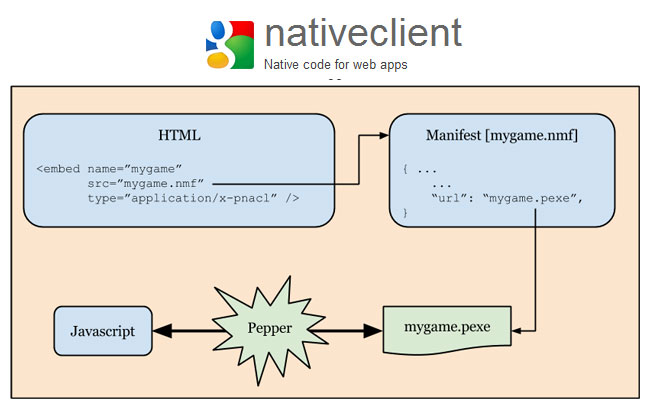
Google, the search engine giant which has revolutionized the internet usage experience of millions of people around the world, always strives to mark foot prints into untouched areas. Off late, Google has launched Google+, the social networking facet of Google, has created hype in media as well as from a set of privileged users who have had firsthand experience of it. It is still expanding the social networking arena by exploring untouched spots in gaming and other sections by filling the gaps (or loopholes) of early intruders and wooing both developers and customers alike by offering attractive incentives and irresistible features.
Native Client features
Here comes the latest addition to the Google set of products. The new beta version of Google Chrome (Version 14) has Native Client built into it, paving the way for creation of next generation of web applications with an altogether new functionality. Interestingly, the Native Client is an open source technology. Google’s intention behind launching Chrome with Native Client is to fill the gap or link between native applications and web applications. The latest version enhances the ability of native applications by being able to compile C and C++ code within the browser.
How Native Client works
Native Client uses a set of interfaces called ‘Pepper Plug-in API (PPAPI)’ which creates the bridge between the native applications (C and C++) and HTML5. Even though PPAPI is developed in the lines of NPAPI (Netscape Plug-in API) which is widely used in Netscape and other browsers (except Internet Explorer which has Microsoft’s own technology), PPAPI offers better features than NPAPI. There is much scope for inclusion of PPAPI in other browsers too in the coming days.
Web developers will be able to create portable and high performance web applications by using native language’s libraries and applying their past experience.
Better gaming and multimedia applications
Provided web developers take native client in right sense and create new applications, there is tremendous scope for unleashing new web applications that process the native code in real time and deliver unusual results. It is expected that native client will influence the gaming and multimedia applications world with innovative products.
Advantages of Native Client
Being different from Java applets and Silverlight, there is no need for developers to learn a new language to implement web applications. They will be able to use their existing C language skills and experience to achieve the same. Developers’ responsibility lies up to the creation of native client compatible code by recompiling the source code. The local machine will process the native code which will be accessed in real time by the browser.
Even though majority of coding of Native Client is done by Google engineers, it is an open source project. So, there is great scope for alterations in the coming days and there is possibility that it will be included by many other browsers.
Future of Native Client
Provided Google fixes up security issues (static analysis of code to block malicious lines of code) and fully address OS (Operating System) interacting power and Native Client plug-in is adopted by other browsers, we can expect new set of web applications in the coming days!
How did you find Google Chrome with built-in Native Client? Does it make sense for you?
